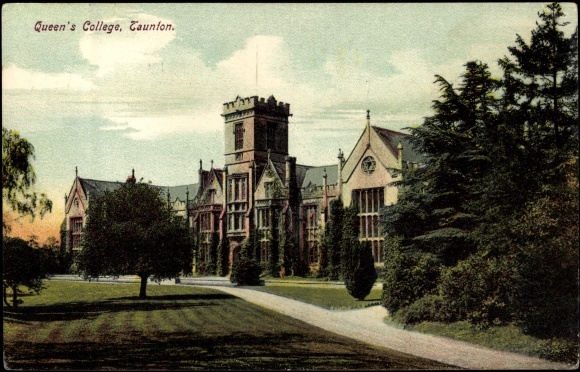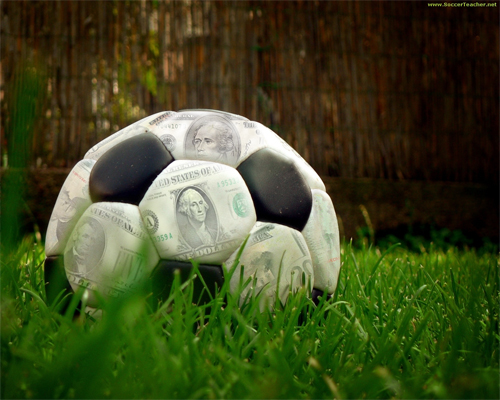Why I won’t be using the term NUTMEG in football again. Wiki dispels the notion the term derives from the never present Tony Nutmeg of Leeds United, and in citing Brain Granville and other football scholars suggest the term probably came from nutmeg export business where unscrupulous traders slipped wooden replicas into sacks and barrels. But like Roy Hodgson’s Apartheid years (also recently missing from Wiki and currently being airbrushed from history by the BBC and others) the most likely origin of the term and how it slipped into the football narrative comes from the Transatlantic Slave Trade.
Month: May 2012
By Simone Poliandri
This week we pay homage to amateur youth football, showcasing a gem by Farai Mutatu, a Zimbabwean player of TNT Dynamite Soccer U13 Boys Red team of Lansing, Michigan. In the 29th minute of the first game of the season against team SCOR, Farai scored the game winning goal by bicycle kicking a deflected ball into the opponent net. A feat of readiness and great coordination. The final score of the match, played on April 16, was 3-2.

The football skills of Richard W. Msimang, a prominent early member of the now 100-year-old African National Congress in South Africa, were reportedly as sharp as his legal mind and political acumen. Last year on this blog I posted a portion of an article published in a 1913 issue of the ANC’s newspaper Abantu Batho (given to me by Peter Limb) that provided a glimpse into Msimang’s sporting past as a student in South Africa and Britain.
Born in Edendale, a freehold black area on the outskirts of Pietermaritzburg, KwaZulu-Natal, a community with a well-deserved reputation for defiance of colonial authority, Richard and his brothers Selby and Herbert grew up refusing to be black servants of white masters. Sport, formal education, and political activism channeled the enlightened self-interest of the Msimangs much like they informed the 20th-century South African struggle for political and cultural empowerment. Thanks to the kindness and generosity of Geoff Bisson (Queen’s College, Taunton), Brian Willan (Rhodes University), and once again Peter Limb, I can now share additional evidence of Richard Msimang’s prowess on the football and rugby pitch.
 The revealing passage below focuses on Msimang’s time at Queen’s College, Taunton (see postcard), a boarding school in the West of England. In his book History of Queen’s College, Taunton (Taunton, England: Old Queenians’ Association, 1957; p. 157), H. J. Channon writes:
The revealing passage below focuses on Msimang’s time at Queen’s College, Taunton (see postcard), a boarding school in the West of England. In his book History of Queen’s College, Taunton (Taunton, England: Old Queenians’ Association, 1957; p. 157), H. J. Channon writes:
On a cold, wet afternoon in November, 1904, a few of us were practising shooting at goal on the Lower. We noticed a dark figure, in a bowler hat and a heavy black overcoat, standing on the terrace watching us. It was the first day at Queen’s of a Zulu, R. W. ‘Msimang. He passed through the gap on to the field. The soccer ball was thrown to him, and he could not resist the temptation of racing towards it. Unfortunately for him the ball stopped just in front of a deep pool. Through the water ‘Oomsi dashed, slipped and sat down, with his bowler floating away from him. We took him up to the Linen Room for a complete change of clothes. His charming smile we saw for the first time it never seemed to desert him. In his own country he had played a lot of soccer, but on the hard grounds he had never worn boots. It was not long before he was in the first XI, and at first when the ground was hard he dispensed, with football boots. I can see him now dashing down the left wing to the corner flag and middling the ball with perfect accuracy. After several years he was articled to a Taunton solicitor, but continued to live at the school. He took up rugby, and became the most popular player Taunton has ever had. The crowd loved to see him emerge with a smile from the bottom of a heap of forwards. He was a brilliant scrum-half [fly half according to Willan], tough and with a swerve that made it difficult to bring him down. So popular was he, that sometimes he had to leave the ground by a back exit to avoid the crowd. After he had passed his final law examination he returned to South Africa, where he became a State Attorney under the Transvaal Government.
 ESPN The Magazine’s Money Issue salary survey project reveals that average paychecks of athletes in US professional leagues pale in comparison to the wages of top soccer players in Europe. Barcelona topped the rankings with a total wage bill of $217 million and an average player salary of $8.7 million. Real Madrid’s average wages came in second at about $7.8 million though the club’s total payroll was about $3 million less than the New York Yankees baseball team.
ESPN The Magazine’s Money Issue salary survey project reveals that average paychecks of athletes in US professional leagues pale in comparison to the wages of top soccer players in Europe. Barcelona topped the rankings with a total wage bill of $217 million and an average player salary of $8.7 million. Real Madrid’s average wages came in second at about $7.8 million though the club’s total payroll was about $3 million less than the New York Yankees baseball team.
7 of the top 10 highest paying sports teams are European soccer clubs, including Manchester City, Chelsea, AC Milan, Bayern Munich, and Inter. The lowest-paying teams are from Major League Soccer and the Canadian Football League.
The survey was conducted by sportingintelligence.com for ESPN. It accounted for 278 teams in 14 major pro leagues, covering seven sports in 10 countries, comprising 7,925 athletes making a combined $15.69 billion in salary. Read the full article here.
For more information, see Deloitte’s annual report on European soccer revenues here.